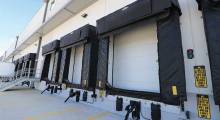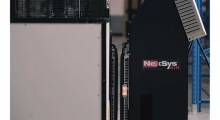Editor’s Note: The following column by Rick Trigatti, the North America president of Cimcorp, is part of Modern’s Other Voices column. The series features ideas, opinions and insights from end-users, analysts, systems integrators and OEMs. Click here to learn about submitting a column for consideration.
———
In practically every industry, companies are facing labor shortages. These year-round shortages are increasingly difficult during peak seasons when sales spike. Challenged already by lean staffing numbers, facilities have to keep up with an influx of orders while still meeting consumer demands for product variety and faster deliveries.
Fully manual warehouses in particular feel the pains of peak seasons. They are quick to run out of space as manufacturing raises output to meet heightened demand. Staff have to scramble to physically pick orders for shipment. Many companies rely on hiring seasonal labor, but that comes with additional costs and challenges in providing adequate training.
Instead, manual facilities can look to automated materials handling to optimize operations–both year round and during busy peaks–and mitigate the challenges of insufficient staffing. Automated solutions can create high-density storage areas to store more products in up to 50% less space. An automated system can run 24/7 with all checks and balances done through software, eliminating picking errors. Since these systems can handle a variety of products at greater speed, it minimizes the number of required seasonal staff so companies can cut labor costs and reallocate existing teams to more sophisticated warehouse tasks.
Once a facility decides to automate, it must then figure out what systems to install, which can vary based on industry and products. With a variety of technologies on the market, it can be a whole new challenge just identifying a solution to meet your needs. To help streamline the process, below are three technologies to consider.
Layer picking solution
A layer picking solution is ideal for large distribution centers, especially those handling consumer goods and food and beverage products. These systems combine gantry robots with a picking tool controlled by sophisticated software to pick from stacked products under the gantry placed on the warehouse floor. Using varying force and vacuum strength based on the SKU to be handled, the system can pick virtually any product stored in layered quantities.
Notably, the system can pick up one layer, multiple layers to create rainbow pallets, or entire pallet loads. Its speed and flexibility make it perfect for warehouses struggling with frequent orders coming from retailers during peak periods.
Crate picking system
An automated crate picking system can rapidly handle large volumes of products in plastic crates, bins or trays. It can meet the needs of a variety of verticals, including health and beauty, consumer goods and food and beverage, and enables precise control over material flow across the entire warehouse.
Goods arrive to the system in stacks of crates. A gantry robot collects a stack from the infeed and stores it on the floor. It will either collect more stacks from the infeed or move into order picking mode where it picks the required number of crates from floor storage for fulfilling an order. When picking is complete, the stacks are moved by an outbound conveyor to the shipping staging area. The automated solution is controlled by advanced software, which allows the system to begin a pre-picking process that speeds up fulfillment. This can help maintain efficiency even when staffing is scarce.
Goods-to-man picking solution
Warehouses dealing with retail, food service and e-commerce can store products in totes or bins and automate their movement with a goods-to-man picking solution. These systems consist of an automated storage and retrieval system (AS/RS) that uses gantry robots integrated with a picking tool equipped with a shuttle device and a high-speed conveyor system to transport goods to order picking stations.
Stacks of totes are stored under the gantry robot and when a SKU is required for an order, the nearest corresponding tote is retrieved and placed on the shuttle car. The shuttle transfers the tote onto a conveyor that feeds the product to a staff member at a picking station. Rapid handling, combined with ergonomic order picking, enables faster fulfillment. In fact, these systems are up to six times more efficient than a manual operation.
If the last peak season caused major headaches and your facility feels understaffed, it may be time to automate. Fortunately, automation does not have to be an “all-or-nothing” deal, and there are often areas where it is best to remain manual from a cost and operations perspective. A good solution should be able to operate as an “island of automation” within any existing manual operation and should have the ease of scalability that allows you to increase the level of automation as your business grows. With the right system in combination with manual handling, labor shortages will be a thing of the past, and your warehouse can run efficiently all year round.
Article topics









